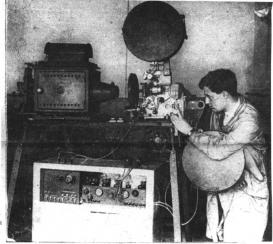Jana Klenhova's dissertation project was a media-historical study of practices and theories of synchronicity and asynchronicity in early Soviet sound cinema. She argued that the formation of the conceptions of synchronicity and asynchronicity in 1920s Soviet cinematography was a result of cross-pollination between diverse fields. Synchronicity and asynchronicity were the key terms in understanding the technical and aesthetic challenges in new audiovisual technologies. But at the same time, synchronicity emerged as an important concept in analytical psychology, philosophy of industrial production and physical culture. In early Soviet cinema, the numerous issues at stake—all politically charged in the Soviet Union’s pre-totalitarian phase—resulted in an array of theories and practices of asynchronous sound, a unique amalgam of media philosophy and aesthetics, national self-conception and political belief. Her work, based on original archival research, analyzed this cinematic field and re-situated it within a wider cultural context, a “culture” constructed at the intersection of technology, perception, ideology, and art. Jana Klenhova made these connections between art, science, and politics via a series of case studies, which enabled a close reading and a reconstruction of early theories and first experimental practices of Soviet audiovision. She focused primarily on filmmakers, scientists, and theoreticians, including Mikhail Tsekhanovsky, Aleksandr Andrievskii, Nikolai Ekk, Dziga Vertov, Sergei Eisenstein, and Pavel Tager.

